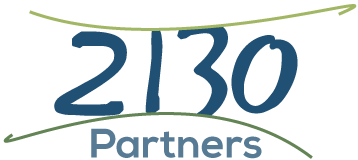Leadership: An Ounce of Prevention is Worth a Pound of Cure
 In a recent conference call with a group of our affiliated facilitators, I was struck by the high level of interest in becoming experts in conflict resolution. From divorce counseling to working on international negotiations, their attention was focused on what I call the “seen” portion of communication and relationship. It’s the part where fight, flight, freeze or appease behaviors are very observable and running the show. It’s also the part where people are very appreciative when someone helps pull the thorn out of their proverbial paw. The obviously large market of people, groups and nations in conflict is clearly calling to them.
Those in pain seem to be much more more willing to pay to reduce or eliminate the pain versus figuring out how to avoid it in the first place. In the physical world, that translates into Western medicine being largely focused on managing disease and illness instead of prevention. In the “unseen” world of our psyche, it translates into therapists, lawyers, and judges dominating the world of struggling marriages and breakdowns in business relationships.
In a recent conference call with a group of our affiliated facilitators, I was struck by the high level of interest in becoming experts in conflict resolution. From divorce counseling to working on international negotiations, their attention was focused on what I call the “seen” portion of communication and relationship. It’s the part where fight, flight, freeze or appease behaviors are very observable and running the show. It’s also the part where people are very appreciative when someone helps pull the thorn out of their proverbial paw. The obviously large market of people, groups and nations in conflict is clearly calling to them.
Those in pain seem to be much more more willing to pay to reduce or eliminate the pain versus figuring out how to avoid it in the first place. In the physical world, that translates into Western medicine being largely focused on managing disease and illness instead of prevention. In the “unseen” world of our psyche, it translates into therapists, lawyers, and judges dominating the world of struggling marriages and breakdowns in business relationships.
Isn’t all of this a demonstration of the old saying about “closing the barn door after the horse is gone?”
Sure it is an enormous market, especially when the expenditures for both mental and physical issues are included. My question is where does real leadership fit into this picture? Wouldn’t it make more sense to engage early and regularly in developing capacities for well being - learning to eat well, exercise, and manage your health and learning how to effectively and successfully work with and communicate with others?
What if you were known as someone around whom issues could be raised and resolved productively? What if you developed the “muscles” to step into difficult conversations and move them forward to conclusions that were valuable to all concerned? What if you summoned the courage to stay with it when the discussion became scary? What can be added if you explored another person’s reality, confronted real issues together, and kept generating mutual trust, respect and safety throughout the discussion?
Wikipedia defines conflict resolution as a range of methods of eliminating sources of conflict. The term "conflict resolution" is sometimes used interchangeably with the term dispute resolution or alternative dispute resolution. It further defines crisis intervention as “emergency psychological care aimed at assisting individuals in a crisis situation to restore equilibrium...” and crisis as “one’s perception or experiencing of an event or situation as an intolerable difficulty that exceeds the person’s current resources and coping mechanisms.”
Too often clients call us for coaching for one of their people as the last stop before they fire the person. In many cases they are shocked when the “loser” breaks through and becomes a valuable employee. Think of the cost, however. One-to-one coaching, especially with a top coach, is expensive and time consuming. What’s much worse, however, is all the lost productivity from that person and all the others who had to interact with them in a dysfunctional way, perhaps for years.
After a very successful engagement with one of his people, one of our clients recently lamented “how many potentially excellent people have been fired without anyone ever being willing to invest in their success?”
 We call this type of work “triage” which Merriam-Webster defines as 1) “a sorting of and allocation of treatment to patients and especially battle and disaster victims...” and 2) the assigning of priority order to funds on the basis of where funds an other resources can best be used, are most needed, or are most likely to achieve success.” When I recall my mom saying, “An ounce of prevention is worth a pound of cure,” the whole cultural spending priority seems backwards to me.
We call this type of work “triage” which Merriam-Webster defines as 1) “a sorting of and allocation of treatment to patients and especially battle and disaster victims...” and 2) the assigning of priority order to funds on the basis of where funds an other resources can best be used, are most needed, or are most likely to achieve success.” When I recall my mom saying, “An ounce of prevention is worth a pound of cure,” the whole cultural spending priority seems backwards to me.
Combining the definitions of conflict resolution and triage it becomes clear that people are often sent to coaching having suffered “battle damage” beyond their resources and capacity to cope. Since part of triage is assigning funds to where they are most likely to achieve success and an ounce of prevention is worth a pound of cure, doesn’t it become obvious that a smart leader directs investment into expanding her own and her team members’ capacities to interact productively?
Are you building strengths in self-generated accountability and in developing a culture of mutual trust, respect, and safety? Is your budget bigger for building capacities or for turnover costs - hiring, firing, severance, etc.? How much of your turnover represents lost opportunities? How high are stress levels - yours and those around you?
How willing are you to take on shifting the paradigm in which you live and work from damage control to productive interactions?
Dwight and Suzanne Frindt Appear on Healthy You! Radio
(September 2, 2009) Dwight and Suzanne Frindt appeared on Healthy You! Radio, 1150AM, KKNW, alternative talk radio in Seattle. Host Keesha Ewers interviewed them about their program, "Productive Interactions," as a way to help people build capacities for healthy, productive interactions for healthy relationships. To hear the show click the "read the full article" link below. To stream the audio archive click the player below. To download an .mp3 follow the download instructions below. Player
To download an MP3 file, follow these instructions:
1. Right-Click on the graphic  above and choose “Download Now,” “Save Target As,” or “Save Link As” (depending on your browser). If your mouse only has one button, click and hold down until the necessary menu pops up. If you’re using a Mac, you can also hold down the Control key and click to bring up the menu.
above and choose “Download Now,” “Save Target As,” or “Save Link As” (depending on your browser). If your mouse only has one button, click and hold down until the necessary menu pops up. If you’re using a Mac, you can also hold down the Control key and click to bring up the menu.
2. Select a location on your computer and save the file. Note that the MP3 files are quite large and may take a long time to download, especially with a slow connection.
2130 Partners Launches Productive Interactions II
(September, 2007) 2130 Partners launches latest course for public enrollment – Productive Interactions II – Moving Towards Mastery. This program builds on their highly successful Productive Interactions I program. For more information please click on "read the full article" to access a downloadable .pdf of the article. [Download] .pdf

